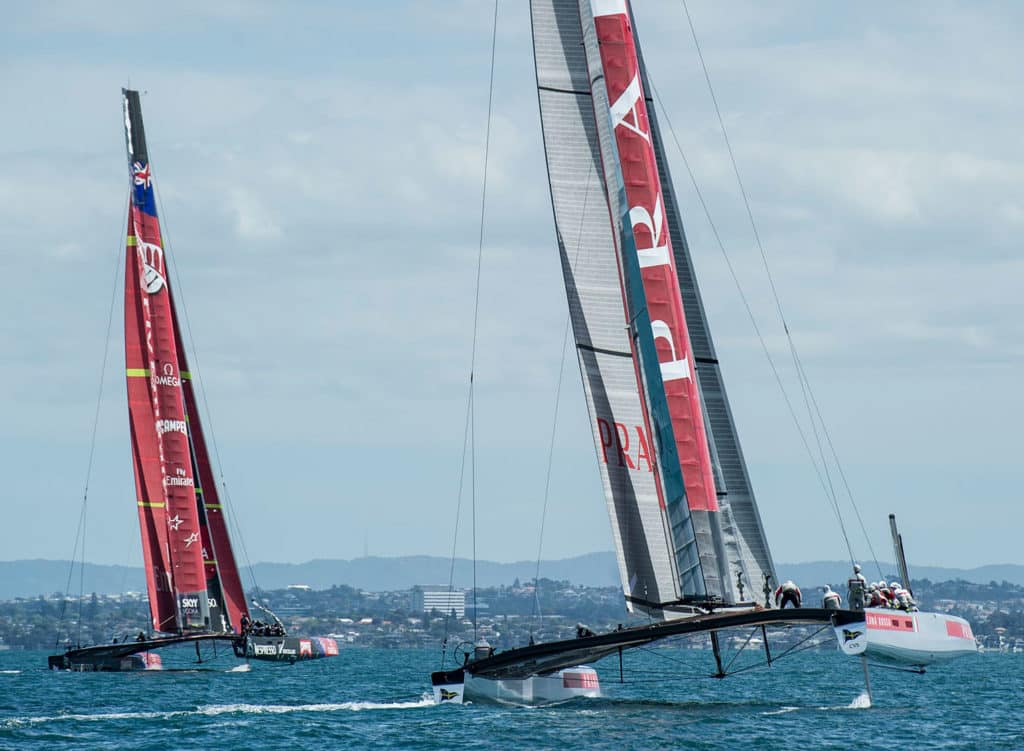
130201_ETNZ_LR
[Editor’s note: This story was initially scheduled for the January/February 2013 issue of _Sailing World magazine, but was bumped from the issue. It was intended to be posted to the website instead, but was misplaced. Our apologies.]_
Watched intently by Northern Hemisphere spy boats and with their 30 allotted sailing days quickly dwindling, Emirates Team New Zealand wrapped up the old year practice racing their AC72 catamaran in Auckland against their sister ship and fellow America’s Cup challenger Luna Rossa.
Mindful of America’s Cup rules prohibiting data sharing, both teams released no results from the few brushes they had. They were quick to emphasize that their sessions in a variety of conditions on the Hauraki Gulf encompassed nothing more than practice starts and short sprints.
By the beginning of December the Kiwi boat had only five more sailing days before it was relegated to spare status. Luna Rossa continued making the most of their remaining 21 permitted sailing days before the January 31 deadline marking the end of limits for on-water sailing time in Phase One.
Crews on both boats emphasized how rapidly they were learning to get the most from the big 72-footers but how far they still were from full potential. Both boats were consistently foiling downwind at blistering speeds, with the Kiwis using their SV boards (S-shape with a V tip) and the Italians on L-foils. And both promised that more changes were coming.
“It’s like learning to sail again. Every little trick is going to make a difference. You never relax,” said Luna Rossa skipper Max Sirena. “Every day is a new day and you learn something completely different.”
Ray Davies, tactician for ETNZ agreed. “As far as crew work goes we’re just scratching at the tip of the iceberg. There are some days when you think ‘we’re getting a handle on this’ and then the next it’s ‘gee, we’ve got a lot to learn!’”
Launched and christened on October 26, the gleaming silver Luna Rossa sailed nine times in November as the Italian team worked through minor teething problems, including two days lost to damage when a wind gust forced the top of the wing into the hoisting crane.
American Steve Erickson, sailing team manager on his fourth campaign with Luna Rossa stressed that his team was still working their boat up. “Before we can do racing tacks and racing jibes in 20 knots we gotta know we can drop the board doing 30 knots and have it hit the water and know we won’t blow the trunk out. That’s the reality check.”
After racing and practicing in their AC45s in December and January the two teams will resume their AC72 jousting on February 1. Luna Rossa will be back with new boards and wing and other refinements while ETNZ will launch their second boat and wing – “quite a different boat next time around,” according to Davies.









